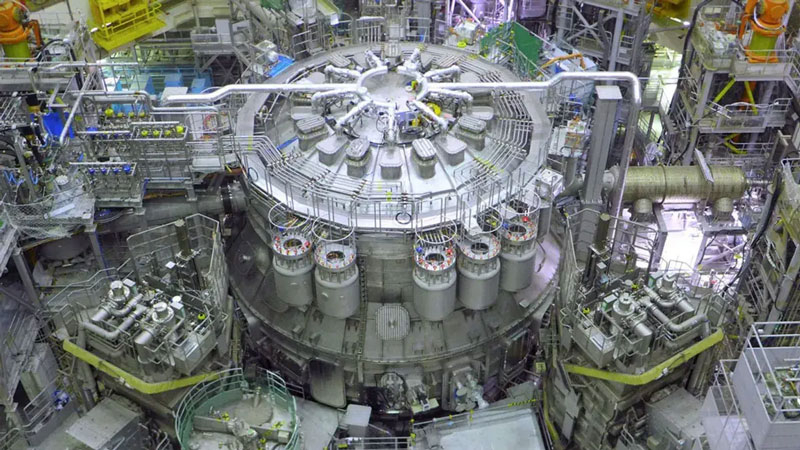The world’s largest thermonuclear reactor produced its first plasma . This is the JT-60SA installation, which was created to help the international project ITER develop thermonuclear technologies. The height of the JT-60SA working chamber is only half the height of the ITER reactor chamber, which makes experiments at the Japanese reactor valuable enough to advance the success of the international project.

Image source: Japan’s National Institutes for Quantum Science and Technology
The JT-60SA fusion reactor was rebuilt on the site of the old JT-60 reactor . It became larger, and the magnets were replaced with superconducting ones. This will allow it to contain plasma in the largest volume of the working area in the world today – 135 m 3 . In the ITER reactor, we note that the volume of the working chamber will be 840 m 3 .
The specialists servicing the JT-60SA reactor have not yet reported on the parameters of the plasma produced in the reactor. In an ideal case, its temperature (obviously, we are talking about electron plasma) should reach 200 million °C. In this case, to start a thermonuclear reaction, the temperature of the ion plasma must reach 100 million °C. In this state, the JT-60SA reactor will have to maintain operation for 100 seconds.
The production of the first plasma using the JT-60SA reactor as a smaller copy of the ITER reactor indicates the correct choice of design and strategy for the international project. The JT-60SA reactor has already helped ITER specialists, although it took a lot of blood. In 2021, during a test run of JT-60SA, a short circuit occurred in the coil of one of the superconducting magnets, which delayed the start of the installation by almost three years. The lengthy and expensive repair of the JT-60SA forced ITER engineers to pay increased attention to the magnets of their reactor, in addition to solving current problems .
Experiments at JT-60SA will allow better preparation for the launch of the reactor in France. At subsequent stages, the paths of these reactors will diverge. The Japanese reactor can only operate on deuterium fuel, while the ITER reactor will eventually be able to switch to more efficient deuterium-tritium fuel. However, experiments on JT-60SA will allow the Japanese to develop their own fusion power plant, Project DEMO, which they intend to build by 2050. In the meantime, the industry is set by the Chinese, whose experimental thermonuclear reactors heat plasma to temperatures above 100 million °C for hundreds of seconds.
Source:



